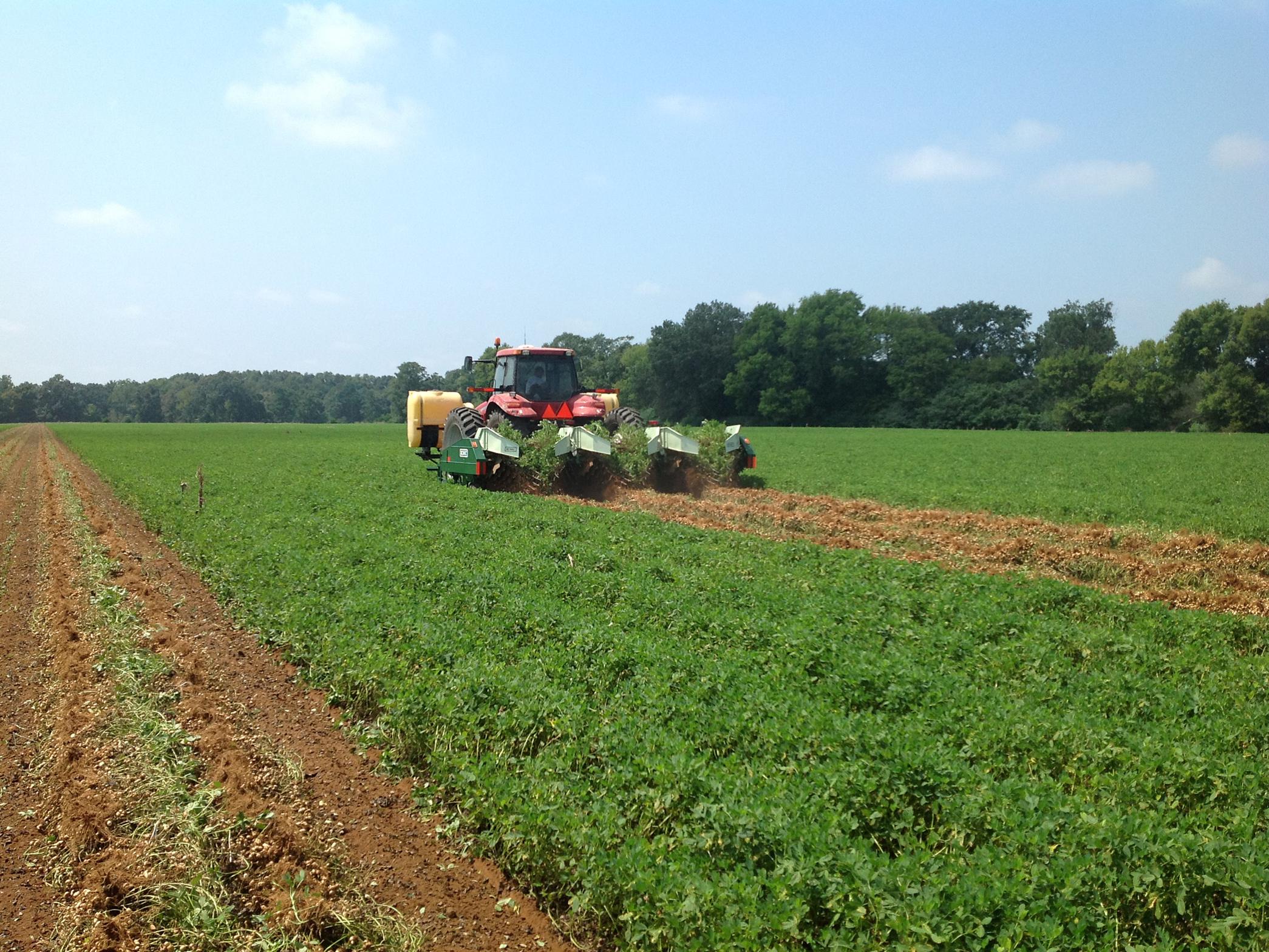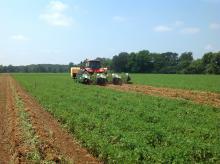Information Possibly Outdated
The information presented on this page was originally released on September 7, 2012. It may not be outdated, but please search our site for more current information. If you plan to quote or reference this information in a publication, please check with the Extension specialist or author before proceeding.
Peanut acreage, yields boost state's rankings
MISSISSIPPI STATE – Many Delta fields that once turned white with cotton are now yielding a below-ground crop and helping propel Mississippi up the list of peanut-producing states.
The state has an estimated 47,000 acres of peanuts this year, up more than 200 percent from the 14,000 acres grown in 2011. The U.S. Department of Agriculture estimates the crop is slightly ahead of schedule, with 8 percent of peanuts harvested by Sept. 2. More than 80 percent of the crop is rated in good or excellent condition.
Mississippi is now ranked seven out of the nation’s 10 peanut-producing states. Last year, the state was No. 9.
Don Respess, Coahoma County director with the Mississippi State University Extension Service, said about 10,000 peanut acres are in Coahoma County, and they are looking really good.
“Our peanut acres primarily came from cotton ground, and about 80 percent of them are irrigated,” Respess said. “This is the first year we’ve had peanuts in the county in about 25 years. It’s a new crop to most growers, but I think it fits the Coahoma County growing systems well.”
Peanuts in the county are still maturing. The area got only about an inch of rain from the remnants of Hurricane Isaac, so many growers are still determining irrigation needs for their peanut acres.
“We’re not used to irrigating something this late,” Respess said. “We planted in late April and May and will start our harvest in the middle of September.”
Disease has been a bit of a problem this year in Coahoma County, largely because producers there simply are unfamiliar with peanut diseases, Respess said. Neither southeast nor northeast Mississippi peanuts suffered from any significant insect or disease pressures this year.
Southeast Mississippi has been growing peanuts for years, and producers there are quite familiar with the intricacies of growing this crop. Heath Steede, George County Extension director, said the crop looks really good so far, despite all the rain from Isaac.
“In spots, we had 18 to 20 inches of rain when the storm came through, so we don’t need any more,” Steede said. “Now we need a little bit of dry weather to get the crop harvested.”
Charlie Stokes, Extension agronomic crops agent in Monroe County, said when peanuts are harvested, an inverter flips the plants, exposing the roots to the air. The peanuts dry in the field for three or four days, then a combine harvests them.
“Peanuts benefit a lot from late August and early September rains,” Stokes said. “Those rains we had from the storm really helped finish off the crop.”
Too much rain at harvest turns fields to mud, bogging down tractors and covering the peanuts with mud when they are flipped. Soil that is too dry rips peanuts off the vine and leaves them in the ground. Peanuts drying in the field can stand some rain, but excessive rain can cause them to deteriorate as they wait for the combine.
John Michael Riley, Extension agricultural economist, said prices for peanuts have been averaging about 34 percent higher than in 2011.
“The extreme drought that plagued southern Georgia in 2011 pushed prices higher,” Riley said. “Throughout much of 2012, these have been mostly steady between 33 and 35 cents per pound, but recent improvements in the national crop’s condition have pressured prices a bit.”





